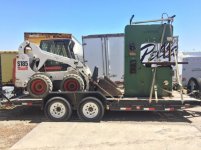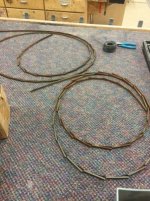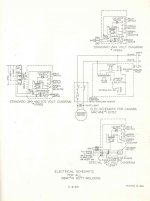I just got this machine today, its a doall V-36. It appears to be in good shape other than being left out in the rain for 2 weeks. The guy i got it from said came from a paper mill and was working when he got it. I will prob make sure it runs before i pull it apart to clean it up. Is there anything i should know about these as far as things to look for? Also is there a way to read the serial number so i can see when it was made, 1948 maybe? The only i thing that i can see initially is that the speedometer is broken.
also I look for other v-36 saws and i have yet to see one with the extra arm on the back that acts as an additional support for the blade guide. It moves up and down with it and it looks to be a factory part. It also has the feed mechanism in tack from what i can see. Hopefully the guy as the push block for it also. he said he had some other parts but he is not in town.
any idea as to the weight on one of these saws, i thought they were around 2000 lbs but the bobcat didnt want to move it so i borrowed a forklift.





also I look for other v-36 saws and i have yet to see one with the extra arm on the back that acts as an additional support for the blade guide. It moves up and down with it and it looks to be a factory part. It also has the feed mechanism in tack from what i can see. Hopefully the guy as the push block for it also. he said he had some other parts but he is not in town.
any idea as to the weight on one of these saws, i thought they were around 2000 lbs but the bobcat didnt want to move it so i borrowed a forklift.
















